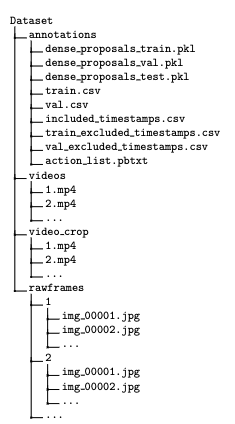与Oc的字典不太一样,Swift的字典不仅可以存储 对象类型的值,还可以存储 基本数据类型值,结构体,枚举值;
Swift字典的使用方式也更加简洁,功能更加强大.
字典本质上也是结构体,查看文档可以看到:
/// A hash-based mapping from `Key` to `Value` instances. Also a /// collection of key-value pairs with no defined ordering. struct Dictionary<Key : Hashable,Value> : CollectionType,DictionaryLiteralConvertible { typealias Element = (Key,Value) typealias Index = DictionaryIndex<Key,Value> /// Create a dictionary with at least the given number of /// elements worth of storage. The actual capacity will be the /// smallest power of 2 that's >= `minimumCapacity`. init() /// Create a dictionary with at least the given number of /// elements worth of storage. The actual capacity will be the /// smallest power of 2 that's >= `minimumCapacity`. init(minimumCapacity: Int) /// The position of the first element in a non-empty dictionary. /// /// Identical to `endindex` in an empty dictionary /// /// Complexity: amortized O(1) if `self` does not wrap a bridged /// `NSDictionary`,O(N) otherwise. var startIndex: DictionaryIndex<Key,Value> { get } /// The collection's "past the end" position. /// /// `endindex` is not a valid argument to `subscript`,and is always /// reachable from `startIndex` by zero or more applications of /// `successor()`. /// /// Complexity: amortized O(1) if `self` does not wrap a bridged /// `NSDictionary`,O(N) otherwise. var endindex: DictionaryIndex<Key,Value> { get } /// Returns the `Index` for the given key,or `nil` if the key is not /// present in the dictionary. func indexForKey(key: Key) -> DictionaryIndex<Key,Value>? subscript (position: DictionaryIndex<Key,Value>) -> (Key,Value) { get } subscript (key: Key) -> Value? /// Update the value stored in the dictionary for the given key,or,if they /// key does not exist,add a new key-value pair to the dictionary. /// /// Returns the value that was replaced,or `nil` if a new key-value pair /// was added. mutating func updateValue(value: Value,forKey key: Key) -> Value? /// Remove the key-value pair at index `i` /// /// Invalidates all indices with respect to `self`. /// /// Complexity: O(\ `count`\ ). mutating func removeAtIndex(index: DictionaryIndex<Key,Value>) /// Remove a given key and the associated value from the dictionary. /// Returns the value that was removed,or `nil` if the key was not present /// in the dictionary. mutating func removeValueForKey(key: Key) -> Value? /// Remove all elements. /// /// Postcondition: `capacity == 0` iff `keepCapacity` is `false`. /// /// Invalidates all indices with respect to `self`. /// /// Complexity: O(\ `count`\ ). mutating func removeAll(keepCapacity: Bool = default) /// The number of entries in the dictionary. /// /// Complexity: O(1) var count: Int { get } /// Return a *generator* over the (key,value) pairs. /// /// Complexity: O(1) func generate() -> DictionaryGenerator<Key,Value> /// Create an instance initialized with `elements`. init(dictionaryLiteral elements: (Key,Value)...) /// True iff `count == 0` var isEmpty: Bool { get } /// A collection containing just the keys of `self` /// /// Keys appear in the same order as they occur as the `.0` member /// of key-value pairs in `self`. Each key in the result has a /// unique value. var keys: LazyBidirectionalCollection<MapCollectionView<[Key : Value],Key>> { get } /// A collection containing just the values of `self` /// /// Values appear in the same order as they occur as the `.1` member /// of key-value pairs in `self`. var values: LazyBidirectionalCollection<MapCollectionView<[Key : Value],Value>> { get } }
可以看到 字典的key必须是实现了 Hashable协议的类型;也就是说key的类型不仅限于 字符串!
1.字典的声明
//定义一个空的字典 var dic:[String:Int]=[:]
形式:
var dicName:[key类型 : 值类型]
或者,使用范型的方式类约束其类型
//字典的范型定义方式 var myDic:Dictionary<String,String>
2.字典的创建.
(1)我们观察上面给出的 字典定义可以看到有两个init 方法,这是两个构造器,我们可以使用这两个构造器来创建字典对象
init()
<span style="font-family: Arial,Helvetica,sans-serif;">init(minimumCapacity: Int)</span>第二个构造器指定了 字典的最小容量
//使用init()构造器 var mydic:[String:String]=Dictionary<String,String>()
//使用init(minimumCapacity:Int) var dic2:[String:Int] dic2=Dictionary<String,Int>(minimumCapacity: 5)
(2)直接赋值创建字典
var myDic:Dictionary<String,String> myDic=["语文":"99","数学":"100"];
3.字典或数组的判空操作
isEmpty
是用该属性返回的布尔值,可以判断数组或字典中的元素个数是否为0
4.访问或修改字典的元素
(1)字典可以直接通过类似下标的方式 key来访问,字典的元素;var 定义的可变字典可以直接使用Key来修改其值
var myDic:Dictionary<String,"数学":"100"]; myDic["语文"]="99.9222"//可变字典可以直接修改内容 println(myDic["语文"])
输出:
Optional("99.9222")
可以看到,通过 key我们拿到的是一个 可选类型,我们需要对其进行解析;因为 该key对应的值可能不存在!!!
(2) 解析可选类型值
我们必须使用可选类型来接收 Key对应的值,否则会导致编译错误
var yuwen:String? = myDic["语文"]
完整示例:
var myDic:Dictionary<String,"数学":"100"]; myDic["语文"]="99.9222"//可变字典可以直接修改内容 var yu:String? = myDic["语文"] if yu != nil { println(yu!) }
输出:
99.9222
可以看到,我们把之前的可选类型解析为我们需要的普通类型,就可以直接使用了
5.修改,新增字典元素的几种方式
(1)可以直接使用 下标方式,形如
dic["key"] = value 的形式来修改或新增字典元素;如果该key对应的元素不存在则会新增这个key的键值对,否则会直接修改该key对应的值;
var myDic:Dictionary<String,String> myDic=["语文":"99","数学":"100"]; println(myDic) myDic["2语文"]="99.9222" println(myDic)
输出:
[数学: 100,语文: 99] [数学: 100,语文: 99,2语文: 99.9222]
上面的 key "2语文" 在 原来的字典中并不存在,此时会新增一个 元素,对应的 key是 该 "2语文",值 是 "99.922"
(2)使用字典的方法
mutating func updateValue(value: Value,forKey key: Key) -> Value?
使用示例:
var myDic:Dictionary<String,"数学":"100"];
println(myDic)
myDic.updateValue("888",forKey: "新增的key")
println(myDic)
输出:
[数学: 100,语文: 99] [新增的key: 888,数学: 100,语文: 99]
可以看到,此方法对于 不存在的 key也会新增 键值对;当然如果该 key存在就会直接修改该key对应的值
6.获取所有的keys和 values,方法 和 Oc中的方法类似
查看 字典的定义文档可以知道 如下的 两个属性,可以获得所有的 keys 和 values
var keys: LazyBidirectionalCollection<MapCollectionView<[Key : Value],Value>> { get }
使用方法:
var myDic:Dictionary<String,"数学":"100"]; println(myDic.keys) println(myDic.values)
输出:
Swift.LazyBidirectionalCollection Swift.LazyBidirectionalCollection
可以看到,输出的是集合类型;如果我们想要看到它的值,则可以把它放在数组中即可:
var myDic:Dictionary<String,"数学":"100"]; var keys1 = Array(myDic.keys) println(keys1) var values1 = Array(myDic.values) println(values1)
输出,所有keys values
[数学,语文] [100,99]
7.删除字典元素的几种方式
(1)删除单个数组元素
var myDic:Dictionary<String,"数学":"100"];
myDic.removeValueForKey("语文")
println(myDic)
myDic["新增"] = "77"
println(myDic)
myDic["数学"] = nil
println(myDic)
[数学: 100] [数学: 100,新增: 77] [新增: 77]
(2)清空字典元素
var myDic:Dictionary<String,"数学":"100"]; myDic = [:] println(myDic)
直接 把字典赋值为 空
myDic = [:]即可
或者:
var myDic:Dictionary<String,"数学":"100"]; myDic.removeAll(keepCapacity: false) println(myDic)
对于 keepCapacity :false /true,根据需求选择 即可;
区别是true的话,会保持数据容量,占据空间?
8.字典的复制
字典的复制规律和数组类似
如果字典内的元素是值类型的,如整型,那么字典复制时,会把源字典复制出元素的副本; 如果字典内的元素是引用类型的,如对象,那么 字典复制时,只是复制出元素的指针,修改该指针则也会修改源字典的内容
关于Swift数组请参见http://www.jb51.cc/article/p-qciqfodx-oh.html
更多Swift教程:http://blog.csdn.net/yangbingbinga






